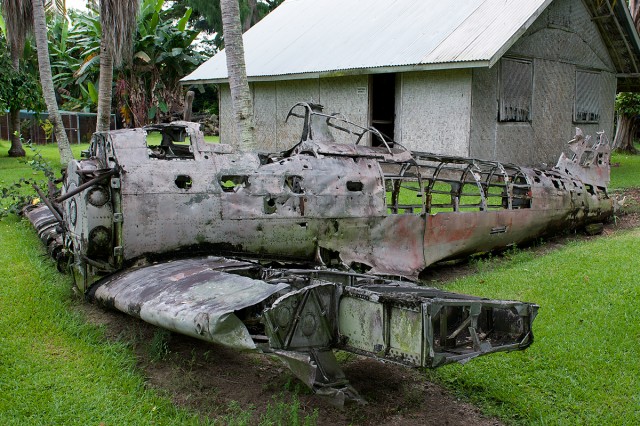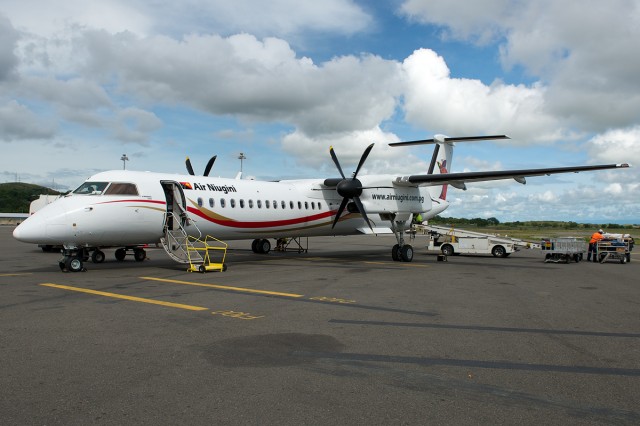
A crashed A6M2 Reisen on display at a museum in Kokopo – Photo: Bernie Leighton | AirlineReporter
This is part of a series about visiting Papua New Guinea. In part one, Bernie reviewed flying Air Niugini. In part two, he visited (New) Ireland and (New) Britain via a Q400. This is part three of four.
There are a lot of things that one can do in New Britain that are typically tourist. You can go to the golf club. There are beaches everywhere. Local markets that aren’t even designed to rip off tourists. Reasonably warm ocean. Think of it like Hawaii before it became a commercialized tourist haven.
The thing is, that kind of tourism bores me. I would not have flown all the way around the world just to go see a new beach. I was actually there because I wanted to see the leftovers from Operation Cartwheel.

Boarding P2-PXS at Jacksons Domestic Airport – Photo: Bernie Leighton | AirlineReporter
So, while Port Moresby (Papua New Guinea, or PNG) may not be a holiday treat, it is certainly better than it has ever been since independence. If you want a tropical holiday, you are going to have to leave the ravenous guard dogs and car jackings of Moresby behind.
Being a huge WWII nerd, I figured my best bet was to head out to either Kavieng (on the island of New Ireland) or Kokopo/Rabual on the island of New Britain. Both of these islands were invaded by the Japanese in 1942, shortly after the attack on Pearl Harbor. The Japanese, however, did not hold on to them long, I will cover that in a later article, because first I have to tell you about the fun one can have at the domestic terminal of Jacksons International Airport.
The airport is chaotic, and there is no air conditioning. To keep machetes and buai out of the terminal there is pre-screening before the sterile area. Check-in opens at least three hours prior to departure to deal with the seemingly-unending lines of people going back from Moresby to their home villages, and the infinite tonnage of excess baggage.
But it all ends up being worth the hassle.

